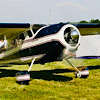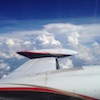19 Nov 2025, 23:08 [ UTC - 5; DST ]
|

| Username Protected |
Message |
|
Username Protected
|
Post subject: Re: Single engine pressurized above FL 250  Posted: Posted: 09 Jan 2015, 19:45 |
|
 |

|
|
 |

Joined: 01/31/10
Posts: 13629
Post Likes: +7761
Company: 320 Fam
Aircraft: 58TC
|
|
Username Protected wrote: Is that accident list supposed to be all pressurization related? I thought JFK Jr. was in a Saratoga. Oops...its Friday.
_________________
Views are my own and don’t represent employers or clients
My 58TC https://tinyurl.com/mry9f8f6
|
|
| Top |
|
|
Username Protected
|
Post subject: Re: Single engine pressurized above FL 250  Posted: Posted: 09 Jan 2015, 19:46 |
|
 |

|
|
 |

Joined: 01/29/08
Posts: 26338
Post Likes: +13085
Location: Walterboro, SC. KRBW
Aircraft: PC12NG
|
|
Username Protected wrote: Is that accident list supposed to be all pressurization related? I thought JFK Jr. was in a Saratoga. Oops...its Friday.
Still a nice plane for a noob.
|
|
| Top |
|
|
Username Protected
|
Post subject: Re: Single engine pressurized above FL 250  Posted: Posted: 09 Jan 2015, 19:49 |
|
 |

|
|
 |

Joined: 10/27/10
Posts: 10790
Post Likes: +6894
Location: Cambridge, MA (KLWM)
Aircraft: 1997 A36TN
|
|
Username Protected wrote: Must be missing something form my gas theory classes, but why would CO2 concentrate and O2 dilute over time if 1.5L exchange rate was maintained. Cabins are not large enough to allow gasses to concentrate in one area. Not being sarcastic, just trying to understand. Unless you have way more plants than is customary, the people are taking in O2 and exhaling CO2. For every parcel of air that comes in from the pressure system, an equal parcel of air goes out in steady-state. If that mass flow is high enough, you can assume the inside and outside air have equal makeup. If the mass flow is low (relative to respiration), you have to assume the CO2 is higher inside than outside.
|
|
| Top |
|
|
Username Protected
|
Post subject: Re: Single engine pressurized above FL 250  Posted: Posted: 09 Jan 2015, 19:58 |
|
 |

|
|


Joined: 12/03/14
Posts: 20748
Post Likes: +26221
Company: Ciholas, Inc
Location: KEHR
Aircraft: C560V
|
|
Username Protected wrote: Still a nice plane for a noob. Happens all the time. Mike C.
_________________
Email mikec (at) ciholas.com
|
|
| Top |
|
|
Username Protected
|
Post subject: Re: Single engine pressurized above FL 250  Posted: Posted: 09 Jan 2015, 20:23 |
|
 |

|
|


Joined: 12/03/14
Posts: 20748
Post Likes: +26221
Company: Ciholas, Inc
Location: KEHR
Aircraft: C560V
|
|
Username Protected wrote: Must be missing something form my gas theory classes, but why would CO2 concentrate and O2 dilute over time if 1.5L exchange rate was maintained. Because the human is taking in O2 and making CO2 out of it. Thus the level of O2 is falling and CO2 is rising. Maybe if I pose the problem like this: Suppose the human gets the 1.5L of air directly from outside and then breathes out into the cabin. The cabin eventually becomes entirely exhale gases with lower O2 and higher CO2 levels. Now suppose the human breathes in and out inside the cabin and the 1.5L of outside air is just pumped into the cabin. You will end up with the same O2 and CO2 concentrations since the human is converting O2 and CO2 at the same rate. As the O2 levels decrease, he has to respirate more often to get enough of it. Indeed, since he has to work harder, he makes more CO2 than before. So you have to oversupply the air simply to keep the O2 and CO2 concentrations in check. Basically, you are diluting the EXHALE gases to keep them from concentrating to unsafe levels. Mike C.
_________________
Email mikec (at) ciholas.com
|
|
| Top |
|
|
Username Protected
|
Post subject: Re: Single engine pressurized above FL 250  Posted: Posted: 09 Jan 2015, 20:38 |
|
 |

|
|
 |

Joined: 11/08/12
Posts: 12835
Post Likes: +5276
Location: Jackson, MS (KHKS)
Aircraft: 1961 Cessna 172
|
|
Username Protected wrote: Basically, you are diluting the EXHALE gases to keep them from concentrating to unsafe levels.
Right ... so the question is what does that take to keep level reasonable over 3 hours. A human breathes about 12 times a minute at about 500ml per breath. Exhaled concentration of C02 is about 40mmHg. So 6 people are producing 36L/minute of 40mm Hg C02. Call the cabin pressure 480mm for round numbers and you've got to dilute 3L of pure CO2/minute. Seems like 20L/minute fresh air would do that.
|
|
| Top |
|
|
Username Protected
|
Post subject: Re: Single engine pressurized above FL 250  Posted: Posted: 09 Jan 2015, 20:54 |
|
 |

|
|

Joined: 06/09/09
Posts: 4438
Post Likes: +3305
Aircraft: C182P, Merlin IIIC
|
|
|
You need enough fresh air coming in so that all the farts get blown out the back end (hope that is where your outflow valve is) before it stings nostrils! This is the design criteria that has to be met, breathing is peanuts in comparision.
|
|
| Top |
|
|
Username Protected
|
Post subject: Re: Single engine pressurized above FL 250  Posted: Posted: 09 Jan 2015, 21:05 |
|
 |

|
|
 |

Joined: 11/06/10
Posts: 12191
Post Likes: +3075
Company: Looking
Location: Outside Boston, or some hotel somewhere
Aircraft: None
|
|
Username Protected wrote: 23.841(a) requires no loss of cabin altitude for any probable failure. Engine failure is a probable failure, happens all the time, so you have to keep cabin below 15,000 ft when the engine quits.
Basically impossible to do without a second source of pressurization. An emergency descent is not a valid way to meet the rule (though, obviously, you will be going down if you have no propulsion). The thought here is that altitude may be required to glide to a suitable airport and can't be wasted in an emergency descent. This stuff is all buried in Advisory Circulars and not in the FARS themselves.
23.841 is triggered when you seek a ceiling above FL250. The altitude was lowered from 33,000 ft to 25,000 ft in Amendment 23-49, which is why some SETPs got higher altitudes before they changed the rule. The change was prompted by the Europeans. Guess what, the two grandfathered popular SETPs are both made in Europe. Makes one wonder.
Given the recent depressurization accidents (TBM most recently), there's no going back on this rule and I would expect no leniency from the FAA on this. Body bags make policy, right or wrong.
(The above is an edited version of what was posted in the SF50 thread, page 23).
Mike C. Mike, I went through all the A/C I could find, not one dealt with single engine. They all are multi-engine basis. As such, even the FAA will state they do not apply. Everything I have read, discussed with aviation company staff (granted more on the STC and Experimental side) have stated the A/C is more about how to meet a regulation. Very much like the AIM. Part of the reason the certification for Cirrus will likely take longer is because new standards and test to meet the regulations must be defined. When you read the Part 23, I doubt anyone can meet the requirements with a single engine above 41K. But above 25K is very doable. I would expect Cirrus to take the same approach to this issue as they did with the SR airplane. Take the easiest path needed to get the certification (e.g. below 25K). Then expand the limits over time as they gather the required data to make the FAA happy and produce newer models. For the SR series, this was life limits on the airplane, chute and cutters access panels, TKS.... Tim
|
|
| Top |
|
|
Username Protected
|
Post subject: Re: Single engine pressurized above FL 250  Posted: Posted: 09 Jan 2015, 22:09 |
|
 |

|
|


Joined: 12/03/14
Posts: 20748
Post Likes: +26221
Company: Ciholas, Inc
Location: KEHR
Aircraft: C560V
|
|
Username Protected wrote: I went through all the A/C I could find, not one dealt with single engine. They all are multi-engine basis. This is the grand daddy AC on part 23 systems: http://rgl.faa.gov/Regulatory_and_Guida ... orated.pdfAC 23-17 discusses the rules. You are not going to find a "single engine" rule. You are going to find language that requires the cabin to not rise above 15,000 ft for any probable failure with no mention of engine count. An engine failure is a probable failure. A dual engine failure is not. Thus, without actually saying it in plain language, twins meet the rule by having redundant pressurization sources and singles don't unless they devise some complex auxiliary pressurization system that doesn't depend on the engine. In the end, that auxiliary system is nothing but negative consequences and adding a second engine is not only simpler but provides other positive benefits. The price of entry to FL410 is two engines. Cirrus knows this which is why they aren't trying for that. The FL280 ceiling is a stretch as well. Mike C.
_________________
Email mikec (at) ciholas.com
|
|
| Top |
|
|
Username Protected
|
Post subject: Re: Single engine pressurized above FL 250  Posted: Posted: 09 Jan 2015, 22:23 |
|
 |

|
|


Joined: 12/03/14
Posts: 20748
Post Likes: +26221
Company: Ciholas, Inc
Location: KEHR
Aircraft: C560V
|
|
Username Protected wrote: Seems like 20L/minute fresh air would do that. Perhaps. FAA uses 0.55 lbs/min/person. 7.34 CF/min at sea level, about 10 CF/min at 8,000 ft cabin. That's 280 L/min per person at 8,000 ft, or 208 L/min per person at 1 atm, or about 10 times your 20 L/min number. I think a cabin with 90% less air flow would be uncomfortable and encourage air sickness. Mike C.
_________________
Email mikec (at) ciholas.com
|
|
| Top |
|
|
Username Protected
|
Post subject: Re: Single engine pressurized above FL 250  Posted: Posted: 09 Jan 2015, 22:24 |
|
 |

|
|

Joined: 08/25/13
Posts: 615
Post Likes: +128
|
|
Username Protected wrote: I went through all the A/C I could find, not one dealt with single engine. They all are multi-engine basis. This is the grand daddy AC on part 23 systems: http://rgl.faa.gov/Regulatory_and_Guida ... orated.pdfAC 23-17 discusses the rules. You are not going to find a "single engine" rule. You are going to find language that requires the cabin to not rise above 15,000 ft for any probable failure with no mention of engine count. An engine failure is a probable failure. A dual engine failure is not. Thus, without actually saying it in plain language, twins meet the rule by having redundant pressurization sources and singles don't unless they devise some complex auxiliary pressurization system that doesn't depend on the engine. In the end, that auxiliary system is nothing but negative consequences and adding a second engine is not only simpler but provides other positive benefits. The price of entry to FL410 is two engines. Cirrus knows this which is why they aren't trying for that. The FL280 ceiling is a stretch as well. Mike C.
Can you point us to where FAA states that engine failure is probable failure and what definition of probable FAA uses. Is it 1 in 10,000 hours like you stated before. Because then a PT6A would not meet that definition of probable.
|
|
| Top |
|
|
Username Protected
|
Post subject: Re: Single engine pressurized above FL 250  Posted: Posted: 09 Jan 2015, 22:39 |
|
 |

|
|

Joined: 08/25/13
Posts: 615
Post Likes: +128
|
|
Username Protected wrote: The engine failure is all causes - not just what p&w would say is their fault. Fuel starvation, fuel exhaustion, bird ingestion, fuel controller malfunction, etc Fuel starvation and exhaustion could not possibly be considered a cause for this purposes. It would shut down both engines, or 4 engines, or 6 engines.
|
|
| Top |
|
|
Username Protected
|
Post subject: Re: Single engine pressurized above FL 250  Posted: Posted: 09 Jan 2015, 22:47 |
|
 |

|
|

Joined: 08/25/13
Posts: 615
Post Likes: +128
|
|
Username Protected wrote: While such could shut down all engines it could shut down one. Failed fuel heat on one side could ice the fuel line. Dumb pilot tricks count to. But ultimately this is not a logical argument. If the FAA has declared it to be so, then it's true  Except that they have not. FAA is like any other government agency, and with right $$$ being placed in right hands on K street, anything is possible. Just ask Eclipse how they did it.
|
|
| Top |
|

|
You cannot post new topics in this forum
You cannot reply to topics in this forum
You cannot edit your posts in this forum
You cannot delete your posts in this forum
You cannot post attachments in this forum
|

Terms of Service | Forum FAQ | Contact Us
BeechTalk, LLC is the quintessential Beechcraft Owners & Pilots Group providing a
forum for the discussion of technical, practical, and entertaining issues relating to all Beech aircraft. These include
the Bonanza (both V-tail and straight-tail models), Baron, Debonair, Duke, Twin Bonanza, King Air, Sierra, Skipper, Sport, Sundowner,
Musketeer, Travel Air, Starship, Queen Air, BeechJet, and Premier lines of airplanes, turboprops, and turbojets.
BeechTalk, LLC is not affiliated or endorsed by the Beechcraft Corporation, its subsidiaries, or affiliates.
Beechcraft™, King Air™, and Travel Air™ are the registered trademarks of the Beechcraft Corporation.
Copyright© BeechTalk, LLC 2007-2025
|
|
|
|



